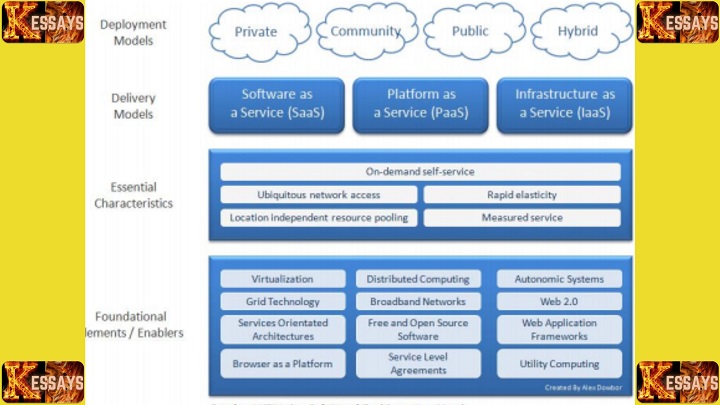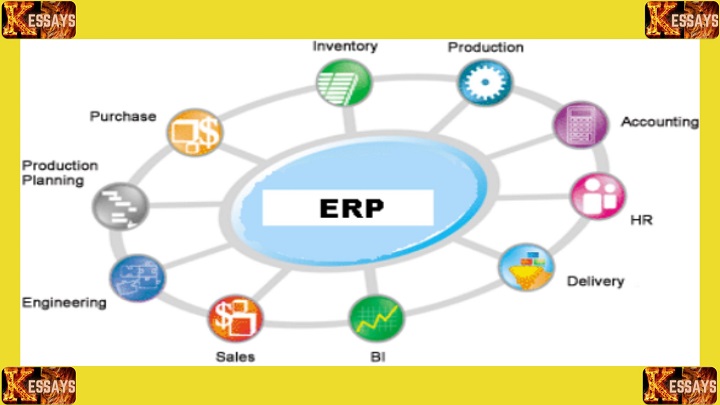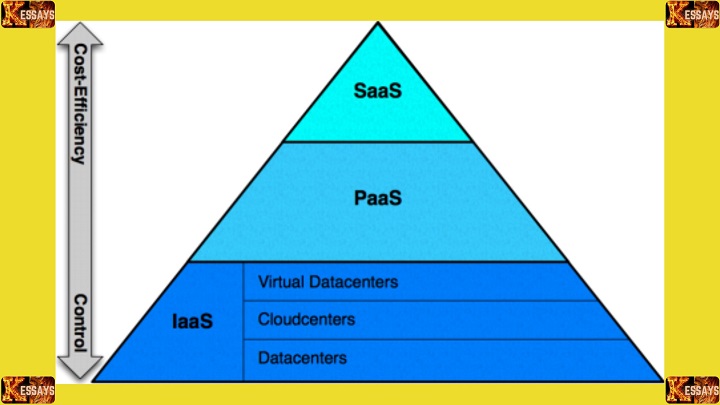Cloud computing has revolutionized how businesses and individuals manage, store, and access data. It involves utilizing a network of remote servers hosted on the internet to store, manage, and process data rather than relying solely on local servers or personal computers. Understanding the various types of cloud computing services is crucial for businesses and individuals looking to leverage cloud technology's benefits effectively. In this guide, we will explore the three common types of cloud computing services: Infrastructure as a Service (IaaS), Platform as a Service (PaaS), and Software as a Service (SaaS). We will delve into each type's characteristics, benefits, and use cases through examples and detailed explanations, providing readers with a comprehensive understanding of cloud computing services.



 Understanding the types of cloud computing services is essential for businesses and individuals seeking to leverage the benefits of cloud technology. Infrastructure as a Service (IaaS), Platform as a Service (PaaS), and Software as a Service (SaaS) offer different levels of abstraction and functionality, catering to diverse use cases and requirements. Organizations can optimize resource utilization, enhance agility, and drive innovation in their operations by choosing the suitable cloud computing service model and provider.
Understanding the types of cloud computing services is essential for businesses and individuals seeking to leverage the benefits of cloud technology. Infrastructure as a Service (IaaS), Platform as a Service (PaaS), and Software as a Service (SaaS) offer different levels of abstraction and functionality, catering to diverse use cases and requirements. Organizations can optimize resource utilization, enhance agility, and drive innovation in their operations by choosing the suitable cloud computing service model and provider.
-
Infrastructure as a Service (IaaS):
Definition:
Infrastructure as a Service (IaaS) is a cloud computing model that provides virtualized computing resources, including storage, networking, and processing power, allowing users to access and manage a computer network virtually. IaaS enables users to deploy and manage virtual machines, storage, and networking infrastructure without physical hardware.
Examples:
Some prominent examples of Infrastructure as a Service providers include Amazon Web Services (AWS), Microsoft Azure, and Google Cloud Platform (GCP). These platforms offer various infrastructure services, including virtual servers, storage solutions, and networking capabilities.Characteristics:
- Scalability: IaaS platforms offer scalability, allowing users to scale resources up or down based on demand. This flexibility enables businesses to handle fluctuating workloads efficiently without over-provisioning resources.
- Pay-as-you-go pricing model: One of the critical features of IaaS is its pay-as-you-go pricing model. Users only pay for the resources they consume, eliminating the need for upfront capital investment in hardware infrastructure. This cost-effective pricing model helps businesses optimize their IT spending.
- Flexibility: IaaS allows users to configure and manage virtualized resources. Users have control over allocating computing resources, storage, and networking settings, allowing them to customize the infrastructure to meet their specific requirements.
Benefits:
- Cost-effectiveness: IaaS offers cost savings by eliminating the need to invest in physical infrastructure. Businesses can avoid upfront hardware costs and reduce ongoing maintenance and operational expenses associated with managing on-premises infrastructure.
- Agility: IaaS enables rapid deployment of resources and infrastructure, allowing businesses to respond quickly to changing market demands and scale their operations as needed. This agility helps companies to stay competitive in dynamic environments.
- Global accessibility: IaaS allows users to access resources from anywhere with an internet connection, enabling seamless collaboration and remote work. This global accessibility ensures that businesses can leverage cloud resources regardless of location.
Read Also: Comprehensive Handbook on Computer Systems
Platform as a Service (PaaS):
Definition:
Platform as a Service (PaaS) is a cloud computing model that provides a complete environment for building, deploying, and managing applications without the complexity of creating and managing underlying infrastructure. PaaS platforms offer developers comprehensive tools, frameworks, and services to streamline the application development process.Examples:
Some notable examples of Platforms as Service providers include Heroku, Microsoft Azure App Service, and Google App Engine. These platforms offer developers various services, including application hosting, database management, and development tools.Characteristics:
- Development tools: PaaS platforms provide developers with integrated tools, frameworks, and APIs, simplifying the application development process. These tools enable developers to write, test, and deploy applications more efficiently.
- Automated deployment: PaaS platforms automate the deployment process, allowing developers to focus on writing code without worrying about infrastructure management. This automated deployment streamlines the application lifecycle, reducing manual intervention and minimizing errors.
- Scalability: PaaS platforms offer scalability, allowing applications to scale automatically based on demand. Developers can dynamically allocate resources to accommodate fluctuating workloads, ensuring optimal performance and reliability.
Benefits:
- Faster time-to-market: PaaS accelerates the application development lifecycle, enabling developers to market new products and features more quickly. By abstracting away infrastructure complexities, developers can focus on writing code, reducing development time, and improving time-to-market.
- Reduced complexity: PaaS abstracts away infrastructure management tasks, such as provisioning servers and managing databases, simplifying the development process. This abstraction layer reduces the complexity of application development, making it easier for developers to build and deploy applications.
- Cost savings: PaaS eliminates the need to maintain and manage infrastructure, reducing business operational costs. By leveraging PaaS platforms, businesses can lower capital expenditures associated with hardware procurement and maintenance and operational expenses related to infrastructure management.

Software as a Service (SaaS):
Definition:
Software as a Service (SaaS) delivers software applications over the internet on a subscription basis, allowing users to access and use the software without downloading or installing it locally. SaaS applications are hosted and managed by third-party providers who handle maintenance, updates, and security.Examples:
Some prominent examples of Software as a Service include Salesforce for customer relationship management (CRM), Microsoft Office 365 for productivity tools like Word and Excel, and Google Workspace for collaboration and communication services like Gmail and Google Docs.Characteristics:
- Accessibility: SaaS applications are accessible via a web browser from any internet-connected device, providing users with flexibility and convenience in accessing the software from anywhere.
- Automatic updates: SaaS providers manage software updates and maintenance tasks, ensuring users can access the latest features, performance improvements, and security patches without manual intervention.
- Multi-tenancy: SaaS applications typically operate on a multi-tenant architecture, serving multiple users from a shared infrastructure. This approach optimizes resource utilization and allows providers to scale efficiently to accommodate growing user bases.
Benefits:
- Cost-effectiveness: SaaS eliminates the need for upfront software licensing fees and reduces IT infrastructure costs associated with hosting and managing software applications locally. Users pay a subscription fee based on usage, making SaaS a cost-effective option for businesses of all sizes.
- Scalability: SaaS offers scalability, allowing organizations to add or remove users as needed without significant overhead quickly. Providers can dynamically allocate resources to accommodate changes in user demand, ensuring optimal performance and user experience.
- Accessibility and collaboration: SaaS facilitates remote work and collaboration by providing users with seamless access to software applications from any location with an internet connection. This accessibility promotes productivity and teamwork across distributed teams.
Read Also: Computer Assembly and Disassembly Lab
Hybrid Cloud:
Definition:
A hybrid cloud is a computing environment combining elements of public and private clouds, allowing data and applications to be shared between them. In a hybrid cloud setup, organizations can leverage the scalability and cost-effectiveness of public cloud services while retaining control over sensitive data and critical workloads in a private cloud or on-premises infrastructure.Examples:
Examples of hybrid cloud solutions include Microsoft Azure Stack, VMware Cloud Foundation, and AWS Outposts, seamlessly integrating public cloud services and on-premises infrastructure.Characteristics:
- Integration: Hybrid cloud environments enable seamless integration between public and private cloud resources, allowing organizations to leverage the benefits of both models.
- Flexibility: Organizations can deploy workloads across public and private clouds based on data sensitivity, compliance requirements, and performance considerations.
- Scalability: Hybrid cloud solutions offer scalability, allowing organizations to scale resources up or down based on demand while maintaining control over critical workloads and sensitive data.
Benefits:
- Cost Optimization: A hybrid cloud allows organizations to optimize costs by leveraging the scalability and cost-effectiveness of public cloud services for non-sensitive workloads while retaining control over sensitive data in a private cloud or on-premises environment.
- Data Control: Organizations can control sensitive data and critical workloads by keeping them within a private cloud or on-premises infrastructure, ensuring compliance with regulatory requirements and security policies.
- Flexibility and Agility: Hybrid cloud environments provide flexibility and agility, allowing organizations to quickly adapt to changing business requirements by seamlessly migrating workloads between public and private clouds as needed.

Hybrid Cloud Storage:
Definition:
Hybrid cloud storage combines on-premises storage infrastructure with cloud-based storage services, allowing organizations to store and manage data across multiple environments. This approach enables organizations to benefit from the scalability and accessibility of cloud storage while retaining control over sensitive data on-premises.Examples:
Examples of hybrid cloud storage solutions include AWS Storage Gateway, Azure StorSimple, and Google Cloud Storage Transfer Service, providing seamless integration between on-premises and cloud storage systems.Characteristics:
- Data Tiering: Hybrid cloud storage solutions support data tiering, allowing organizations to automatically or manually move data between on-premises and cloud storage tiers based on access frequency, cost considerations, and performance requirements.
- Data Replication: Hybrid cloud storage solutions offer data replication capabilities, ensuring data resilience and disaster recovery by replicating data between on-premises and cloud-based storage systems.
- Unified Management: Hybrid cloud storage solutions provide unified management interfaces, allowing organizations to centrally manage and monitor on-premises and cloud-based storage resources from a single management console.
Benefits:
- Scalability: Hybrid cloud storage solutions offer scalability, allowing organizations to seamlessly scale storage resources up or down based on changing business requirements and data growth.
- Cost Optimization: By leveraging a combination of on-premises and cloud-based storage resources, organizations can optimize storage costs by aligning storage tiers with data access patterns and cost considerations.
- Data Resilience: Hybrid cloud storage solutions enhance data resilience and disaster recovery capabilities by replicating data between on-premises and cloud-based storage systems, ensuring business continuity and data protection.
Read Also: My Reflection on Computer Assembly
Function as a Service (FaaS):
Definition:
Function as a Service (FaaS) is a cloud computing service model that allows developers to deploy individual functions or code in response to specific events without managing the underlying infrastructure. Also known as serverless computing, FaaS platforms execute code in stateless containers triggered by events such as HTTP requests, database changes, or scheduled tasks.Examples:
Popular functions of a service platform include AWS Lambda, Microsoft Azure functions, and Google Cloud functions.Characteristics:
- Event-driven execution: FaaS platforms execute code in response to specific events or triggers, such as HTTP requests, file uploads, or database changes.
- Scalability: FaaS automatically scales resources up or down based on demand, allowing developers to handle varying workloads without provisioning or managing servers.
- Pay-per-use pricing: Users are billed based on the actual execution time and resources consumed by their functions, making FaaS a cost-effective option for sporadic or unpredictable workloads.
Benefits:
- Reduced operational overhead: FaaS abstracts away infrastructure management tasks, allowing developers to focus on writing code rather than managing servers or provisioning resources.
- Scalability and elasticity: FaaS platforms automatically scale resources in response to changes in workload, ensuring optimal performance and resource utilization without manual intervention.
- Cost-effectiveness: With pay-per-use pricing, users only pay for the resources consumed by their functions, eliminating the need for upfront infrastructure investment and reducing operational costs.
Use Cases:
- Web applications: FaaS can be used to build serverless web applications, where functions handle HTTP requests and perform specific tasks such as authentication, data processing, or content delivery.
- Real-time data processing: FaaS platforms are suitable for processing real-time data streams, such as clickstream analysis, IoT sensor data processing, and log monitoring.
- Automation and integration: Developers can use FaaS to automate workflows and integrate disparate systems by triggering functions in response to events from various sources, such as messaging queues, file uploads, or API calls.
Read Also: Business Ethics and Social Responsibility for SMEs
Multicloud in Cloud Computing:
Multicloud is a strategic approach to cloud computing that uses services and resources from multiple cloud providers rather than relying on a single provider. This approach offers several advantages, including increased flexibility, improved redundancy, and reduced risk of vendor lock-in.Definition:
Multicloud refers to using services and resources from multiple cloud providers simultaneously to meet specific business needs.Examples:
Utilizing Amazon Web Services (AWS) for storage solutions, Microsoft Azure for computing capabilities, and Google Cloud Platform (GCP) for machine learning services.Characteristics:
- Flexibility: Multicloud allows organizations to select the best services from different providers based on their unique requirements, enabling them to tailor their cloud infrastructure to specific workloads.
- Redundancy: By distributing workloads across multiple cloud environments, multi-cloud architecture ensures redundancy and high availability, minimizing the risk of service disruptions.
- Avoids Vendor Lock-in: Utilizing multiple cloud providers reduces reliance on any single vendor, mitigating the risk of being locked into a specific provider's ecosystem and enabling organizations to negotiate better pricing and terms.
Benefits:
- Optimized Performance: Multicloud architecture enables organizations to optimize performance by leveraging services from different providers that best suit their needs, thereby enhancing overall efficiency.
- Risk Mitigation: Diversifying across multiple cloud providers reduces the risk of downtime and data loss associated with a single provider, enhancing the resilience of the infrastructure.
- Cost Optimization: By leveraging competitive pricing and discounts offered by various cloud providers, multi-cloud environments allow organizations to optimize costs based on workload requirements, potentially reducing overall expenditure.
 Understanding the types of cloud computing services is essential for businesses and individuals seeking to leverage the benefits of cloud technology. Infrastructure as a Service (IaaS), Platform as a Service (PaaS), and Software as a Service (SaaS) offer different levels of abstraction and functionality, catering to diverse use cases and requirements. Organizations can optimize resource utilization, enhance agility, and drive innovation in their operations by choosing the suitable cloud computing service model and provider.
Understanding the types of cloud computing services is essential for businesses and individuals seeking to leverage the benefits of cloud technology. Infrastructure as a Service (IaaS), Platform as a Service (PaaS), and Software as a Service (SaaS) offer different levels of abstraction and functionality, catering to diverse use cases and requirements. Organizations can optimize resource utilization, enhance agility, and drive innovation in their operations by choosing the suitable cloud computing service model and provider.

Comments are closed!